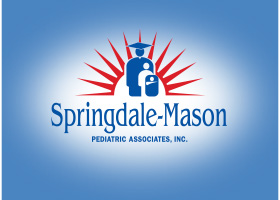Newborns
Preterm Babies: Health Concerns
View spanish version, share, or print this article.
Because preterm (premature) babies are born before they are physically ready to leave the womb, they often have health problems. These newborns have higher rates of disabilities, such as cerebral palsy, and even death.
Preterm babies are given extra medical attention and assistance immediately after delivery. Depending on how early the baby has arrived, your pediatrician or obstetrician may turn over care to a neonatologist (a pediatrician who specializes in the care of preterm or very ill babies) to help with any special treatment the baby needs.
Here is information from the American Academy of Pediatrics about some of the most common conditions that occur in preterm infants.
Respiratory distress syndrome is a breathing disorder related to the baby's immature lungs. It occurs because the lungs of preterm babies often lack surfactant, a liquid substance that allows the lungs to remain expanded. Artificial surfactants can be used to treat these babies, along with a ventilator, high-flow nasal canula (HFNC), or CPAP (continuous positive airway pressure) machine to help them breathe better and maintain adequate oxygen levels in their blood. Sometimes, extremely preterm babies may need long-term oxygen treatment and may occasionally go home with supportive oxygen therapy.
Bronchopulmonary dysplasia, or chronic lung disease, is a term used to describe babies who require oxygen for several weeks or months. They tend to outgrow this uncommon condition, which varies in severity, as their lungs grow and mature.
Apnea is a temporary pause (more than 20 seconds) in breathing that is common in preterm infants. It often is associated with a decline in the heart rate, called
Retinopathy of prematurity (ROP) is an eye disease featuring underdeveloped retinas. Most cases resolve without treatment, although serious cases may need treatment, including laser surgery and/or injections of medication. A pediatric ophthalmologist or retina specialist may examine your infant to diagnose any problems and, if needed, recommend treatment.
Intraventricular hemorrhage (IVH) is bleeding inside or around the ventricles (the spaces in the brain containing the cerebrospinal fluid). Intraventricular hemorrhage is most common in preterm babies, especially very low-birth-weight babies—those weighing less than 3 pounds 5 ounces (1,500 g). Bleeding can occur because blood vessels in a preterm baby's brain are very fragile and immature and rupture easily. Nearly all cases of IVH occur within the first week after birth. It is diagnosed by doing an ultrasound of the head. Grades 1 and 2 are most common, and often there are no further complications. Grades 3 and 4 are the most serious and may result in long-term brain injury. Hydrocephalus (too much cerebrospinal fluid in the brain) may develop after severe IVH. There is no specific treatment for IVH, except to treat any other health problems that may worsen the condition. Although care of sick and preterm babies has advanced greatly, it is not possible to prevent IVH from occurring in some babies.
Necrotizing enterocolitis (NEC) is the most common and serious intestinal disease among preterm babies. It happens when tissue in the small or large intestine is injured or inflamed. This can lead to death of intestinal tissue and, in rare cases, a hole (perforation) in the intestinal wall. Most cases of NEC occur in babies born before 32 weeks' gestation. Babies with NEC usually develop it within the first 2 to 4 weeks after birth. It is diagnosed with signs of feeding intolerance or belly distension and confirmed with X-rays. Treatment involves stopping feedings for 5 to 7 days and giving antibiotics. If it is severe, surgery may be needed. Breast milk feeding is the single most effective means to prevent NEC in preterm infants, and research is currently underway on the role that infant-specific probiotics play in decreasing risk.
Jaundice happens when a chemical called
Other conditions sometimes seen in preterm babies include anemia of prematurity (a low red blood cell count) and heart murmurs.
For More Information
American Academy of Pediatrics
March of Dimes
American College of Obstetricians and Gynecologists
Disclaimer
Adapted from the American Academy of Pediatrics book
The American Academy of Pediatrics (AAP) is an organization of 67,000 primary care pediatricians, pediatric medical subspecialists, and pediatric surgical specialists dedicated to the health, safety, and well-being of all infants, children, adolescents, and young adults.
In all aspects of its publishing program (writing, review, and production), the AAP is committed to promoting principles of equity, diversity, and inclusion.
Any websites, brand names, products, or manufacturers are mentioned for informational and identification purposes only and do not imply an endorsement by the American Academy of Pediatrics (AAP). The AAP is not responsible for the content of external resources. Information was current at the time of publication. The information contained in this publication should not be used as a substitute for the medical care and advice of your pediatrician. There may be variations in treatment that your pediatrician may recommend based on individual facts and circumstances.



